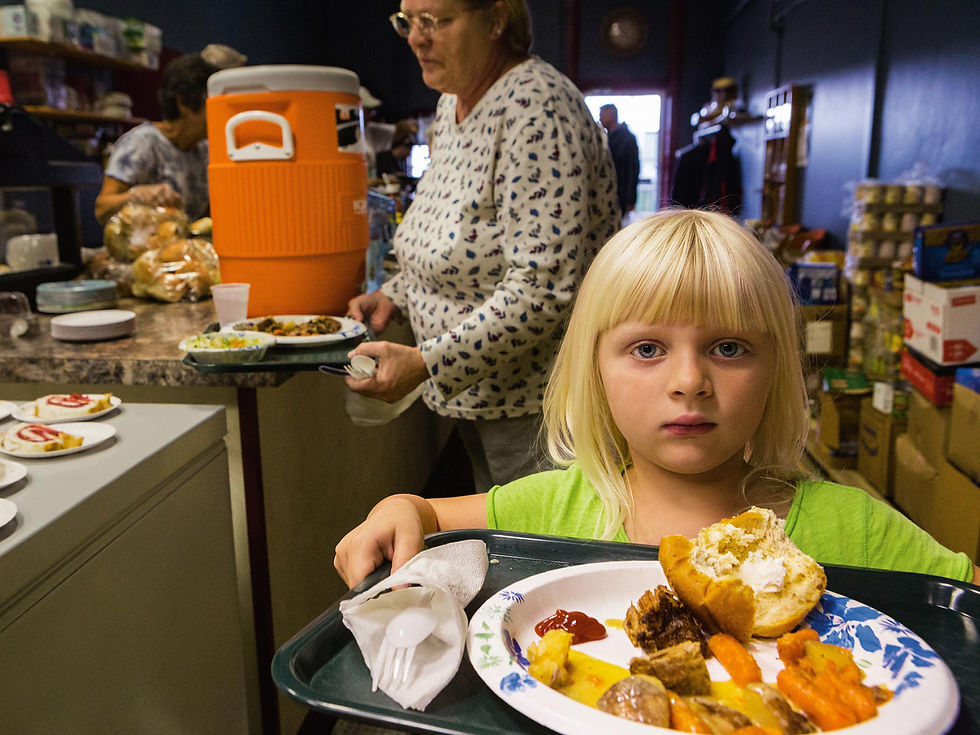Hunger in a Wealthy Nation
- slmprogdev
- Oct 23, 2018
- 2 min read
My children's youth group recently watched a video on worldwide hunger. The cartoon video's narrator talked about hunger in less wealthy nations in contrast to obesity in the United States and other "developed" nations. I think the video's producer was correct in the video's main point -- hunger is not a production problem, because the earth has all the resources we need to grow enough for everyone. All of the people in the world could have enough to eat if we, the human race, decided to make that happen. (The video leaves out a lot of complexities, like the long-lasting impacts of foreign occupation/colonization. If you watch the video, available here, definitely also read the comments.)
What struck me as the Program Development Director at SLM, was that the video did not really address hunger here in the United States, which is absolutely a real issue. According to Feeding America, there are about 40,000,000 people in the United States who struggle with food insecurity. As we just learned from our director at the October board meeting, over 94,000 in Lansing alone face this problem, and 1 in 6 children in mid-Michigan will go to bed hungry tonight. Just based on conversations with our clients and other service providers in the South Lansing area, I know that hunger is a real and present issue for many of our neighbors.
Looking for stories to help people connect with local hunger, I came across a National Geographic article by Tracie McMillian, The New Face of Hunger. Ms. McMillian does a great job of bringing to life the experiences of folks working as hard as they can to feed their families, but still just barely making it. Although the stories she tells are about people in Iowa, Texas, and New York, they sound just like the stories I hear in Lansing, Mulliken, and Detroit. Ms. McMillian also does a great job of connecting those stories to the facts about hunger in the US and to recent and planned policy changes that will further impact people's lives -- and not for the better.
These are the stories of hurting people, frightened parents and grandparents, our neighbors and our children's classmates. We can honor those stories first by listening (or in this case reading). And then we can refuse to sit still and let it continue. There are so many ways to make a difference. Donate. Volunteer. Talk to legislators and policy makers. This is not a condition that we must accept. It can change. Contact our director, Vicki Nichols, or program development director, Katie Price, to learn how you can make a difference.






Comments